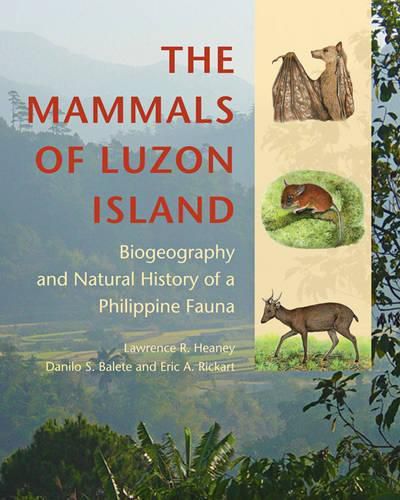Readings Newsletter
Become a Readings Member to make your shopping experience even easier.
Sign in or sign up for free!
You’re not far away from qualifying for FREE standard shipping within Australia
You’ve qualified for FREE standard shipping within Australia
The cart is loading…






Revealing the astounding mammalian diversity found on the largest Philippine island, The Mammals of Luzon Island is a unique book that functions both as a field guide and study of tropical fauna. The book features 120 fully illustrated species profiles and shows how the mammals fit into larger questions related to evolution, ecology, and biogeography. Luzon’s stunning variety of mammals includes giant fruit-eating bats; other bats so small that they can roost inside bamboo stems; giant plant-eating rodents that look like, but are not, squirrels; shrews that weigh less than half an ounce; the rapidly disappearing Philippine warty pig; and the long-tailed macaque, Luzon’s only nonhuman primate. While celebrating Luzon’s remarkably rich mammal fauna, the authors also suggest conservation strategies for the many species that are under threat from a variety of pressures. Based on a century of accumulated data and fifteen years of intensive study, The Mammals of Luzon Island delivers a message that will appeal equally to scientists, conservationists, and ecologically minded travelers.
$9.00 standard shipping within Australia
FREE standard shipping within Australia for orders over $100.00
Express & International shipping calculated at checkout
Revealing the astounding mammalian diversity found on the largest Philippine island, The Mammals of Luzon Island is a unique book that functions both as a field guide and study of tropical fauna. The book features 120 fully illustrated species profiles and shows how the mammals fit into larger questions related to evolution, ecology, and biogeography. Luzon’s stunning variety of mammals includes giant fruit-eating bats; other bats so small that they can roost inside bamboo stems; giant plant-eating rodents that look like, but are not, squirrels; shrews that weigh less than half an ounce; the rapidly disappearing Philippine warty pig; and the long-tailed macaque, Luzon’s only nonhuman primate. While celebrating Luzon’s remarkably rich mammal fauna, the authors also suggest conservation strategies for the many species that are under threat from a variety of pressures. Based on a century of accumulated data and fifteen years of intensive study, The Mammals of Luzon Island delivers a message that will appeal equally to scientists, conservationists, and ecologically minded travelers.